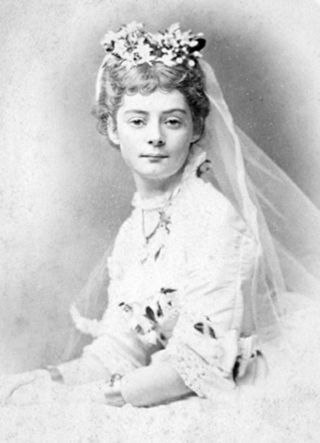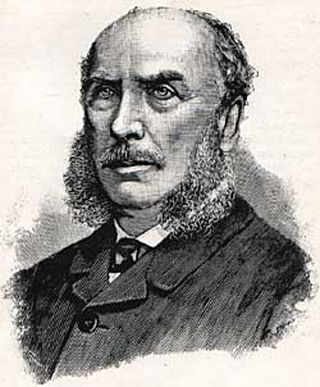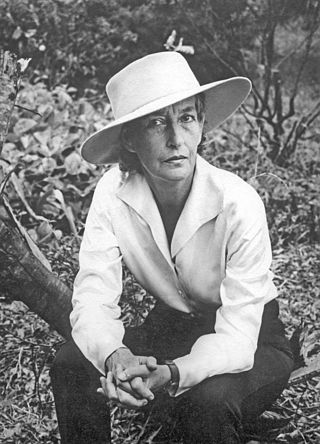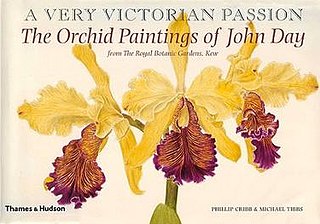
Pierre-Joseph Redouté, was a painter and botanist from the Austrian Netherlands, known for his watercolours of roses, lilies and other flowers at the Château de Malmaison, many of which were published as large coloured stipple engravings. He was nicknamed "the Raphael of flowers" and has been called the greatest botanical illustrator of all time.

Marian Ellis Rowan, known as Ellis Rowan, was a well-known Australian artist and botanical illustrator. She also did a series of illustrations on birds, butterflies and insects.

Banksia robur, commonly known as swamp banksia, is a species of flowering plant in the family Proteaceae. It grows in sand or peaty sand in coastal areas from Cooktown in north Queensland to the Illawarra region on the New South Wales south coast. It is often found in areas which are seasonally inundated. It grows as a multistemmed shrub to 3 m tall, with large, leathery tough green leaves with serrated margins up to 30 cm (12 in) long and 10 cm (4 in) wide. The new growth is colourful, in shades of red, maroon or brown with a dense felt-like covering of brown hairs.

Robert David FitzGerald was an Irish-Australian surveyor, ornithologist, botanist and poet.

Vera Scarth-Johnson was a noted botanist and botanical illustrator who is also remembered for her continual efforts to teach others to treasure the flora and environment of Australia and, in particular, the botanically rich region of Cooktown and the Endeavour River Valley, on Cape York Peninsula, in far northern Queensland.

Madeleine Françoise Basseporte, was a French painter. From 1741 until her death, she served as the Royal Painter for the King's Garden and Cabinet, an unprecedented appointment for a woman artist at the time.

Botanical illustration is the art of depicting the form, color, and details of plant species. They are generally meant to be scientifically descriptive about subjects depicted and are often found printed alongside a botanical description in books, magazines, and other media. Some are sold as artworks. Often composed by a botanical illustrator in consultation with a scientific author, their creation requires an understanding of plant morphology and access to specimens and references.

John Day (1824–1888) was an English orchid-grower and collector, and is noted for producing some 4000 illustrations of orchid species in 53 scrapbooks over a period of 15 years. These scrapbooks were donated to The Royal Botanic Gardens, Kew in 1902 by his sister, Emma Wolstenholme.The standard author abbreviation J.Day is used to indicate this person as the author when citing a botanical name.

Cooktownia robertsii, commonly known as the mystery orchid, is the only species of plant in the orchid genus Cooktownia and is endemic to far north Queensland. It is a rare ground orchid, named in honour of the first scientist to discover it, Lewis Roberts and has two ground-hugging leaves and up to nine small green flowers. It is an unusual species because of its highly modified column which lacks pollen and does not have a receptive stigma.

Dendrobium bigibbum, commonly known as the Cooktown orchid or mauve butterfly orchid, is an epiphytic or lithophytic orchid in the family Orchidaceae. It has cylindrical pseudobulbs, each with between three and five green or purplish leaves and arching flowering stems with up to twenty, usually lilac-purple flowers. It occurs in tropical North Queensland, Australia and New Guinea.

Cooktown is a coastal town and locality in the Shire of Cook, Queensland, Australia. Cooktown is at the mouth of the Endeavour River, on Cape York Peninsula in Far North Queensland where James Cook beached his ship, the Endeavour, for repairs in 1770. Both the town and Mount Cook which rises up behind the town were named after James Cook.

Phaius robertsii, commonly known as forest swamp orchid, is a plant in the orchid family and is native to a small area of Tropical North Queensland and to New Caledonia. It is an evergreen, terrestrial herb with above-ground stems, three to five pleated leaves and up to twenty flowers which are yellow on the back and brick-red inside. It grows in wet places in rainforest.

Aphyllorchis queenslandica, commonly known as the yellow pauper orchid, is a leafless terrestrial mycotrophic orchid in the family Orchidaceae. It has up to twelve dull yellow flowers on a thin, fleshy, purple flowering stem and is endemic to tropical north Queensland where it grows in rainforest.

Van-royena is a monotypic genus in the plant family Sapotaceae. The sole species is Van-royena castanosperma, commonly known as milky plum, yellow plum, saffron boxwood or poison plum, which is endemic to Queensland, Australia. It is an understorey tree of rainforest, first described in 1919.
Regina Olson Hughes (1895–1993) was an American scientific illustrator in Botanical Art. Born February 1, 1895, in Herman, Nebraska, she became fascinated with the world of plants and flowers. Her parents were Gilbert and Johanna (Sullivan) Olson. At age 10, she contracted scarlet fever and her hearing slowly diminished until she became fully deaf at age 14. In order for her to communicate with her peers, she relied on lip reading and written notes for business work. Hughes retained her speech skills and continued to speak fluently throughout her adulthood. She became proficient in American Sign Language when she enrolled in Gallaudet University.
Corybas fordhamii, commonly known as the banded helmet orchid or swamp helmet orchid, is a species of terrestrial orchid endemic to south-eastern Australia. It has an egg-shaped to heart-shaped leaf and a reddish to reddish purple flower which leans forward. It is similar to C. unguiculatis which does not grow in swamps and has a different labellum.

Habenaria chlorosepala, commonly known as the green-hooded rein orchid, is a species of orchid that is endemic to a small area in far north Queensland. It has two or three leaves at its base and up to twenty small green and white flowers.
Donald Frederick Blaxell, is an Australian botanist, botanical collector and taxonomist.
Anilios robertsi, also known as Roberts' blind snake, is a species of blind snake that is endemic to Australia. The specific epithet robertsi honours naturalist Lewis Roberts, an honorary consultant of the Queensland Museum and collector of the holotype specimen.

Mark Isaac-Williams is an English botanical artist, horticulturalist, and orchid expert; he has published several books on the subject.


















